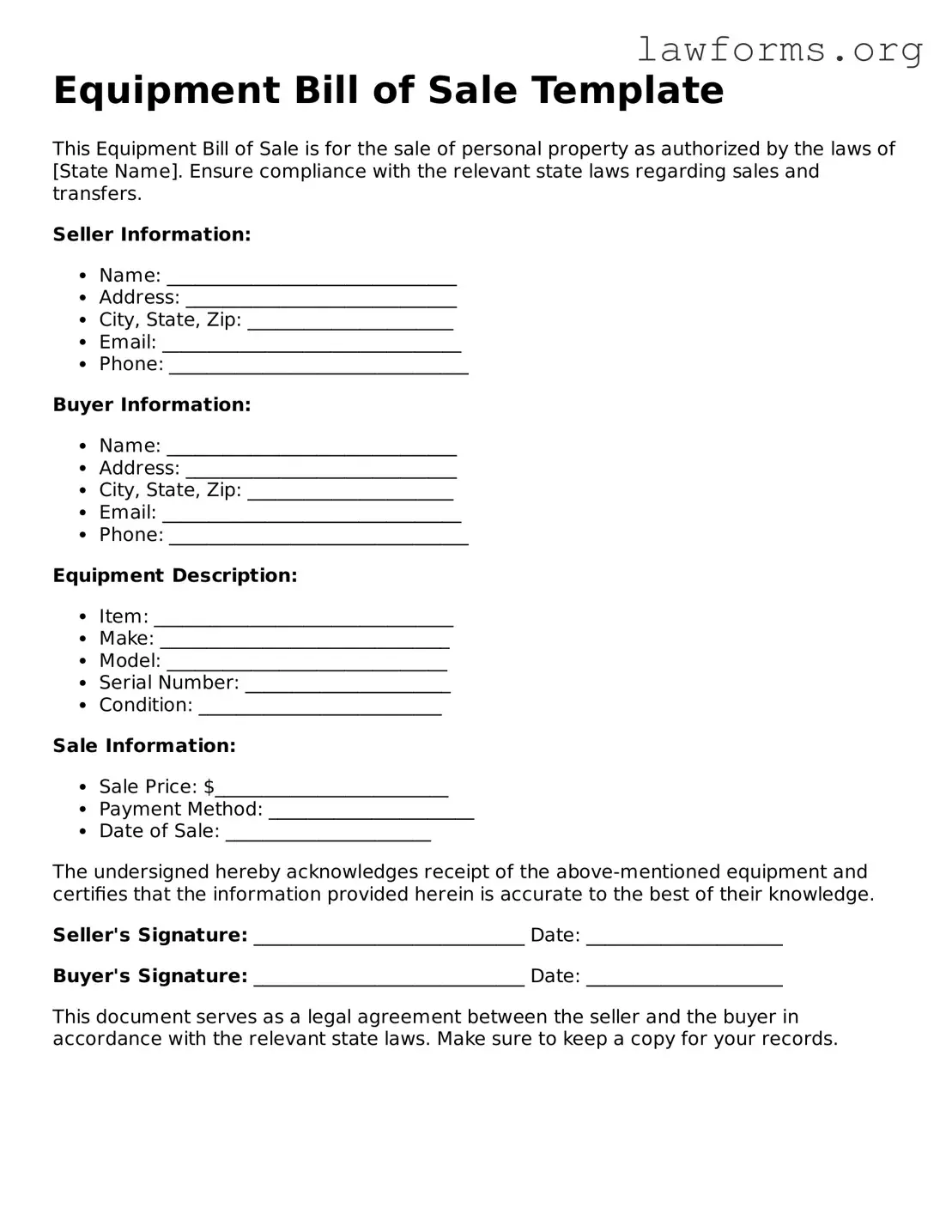Equipment Bill of Sale Template
This Equipment Bill of Sale is for the sale of personal property as authorized by the laws of [State Name]. Ensure compliance with the relevant state laws regarding sales and transfers.
Seller Information:
- Name: _______________________________
- Address: _____________________________
- City, State, Zip: ______________________
- Email: ________________________________
- Phone: ________________________________
Buyer Information:
- Name: _______________________________
- Address: _____________________________
- City, State, Zip: ______________________
- Email: ________________________________
- Phone: ________________________________
Equipment Description:
- Item: ________________________________
- Make: _______________________________
- Model: ______________________________
- Serial Number: ______________________
- Condition: __________________________
Sale Information:
- Sale Price: $_________________________
- Payment Method: ______________________
- Date of Sale: ______________________
The undersigned hereby acknowledges receipt of the above-mentioned equipment and certifies that the information provided herein is accurate to the best of their knowledge.
Seller's Signature: _____________________________ Date: _____________________
Buyer's Signature: _____________________________ Date: _____________________
This document serves as a legal agreement between the seller and the buyer in accordance with the relevant state laws. Make sure to keep a copy for your records.
